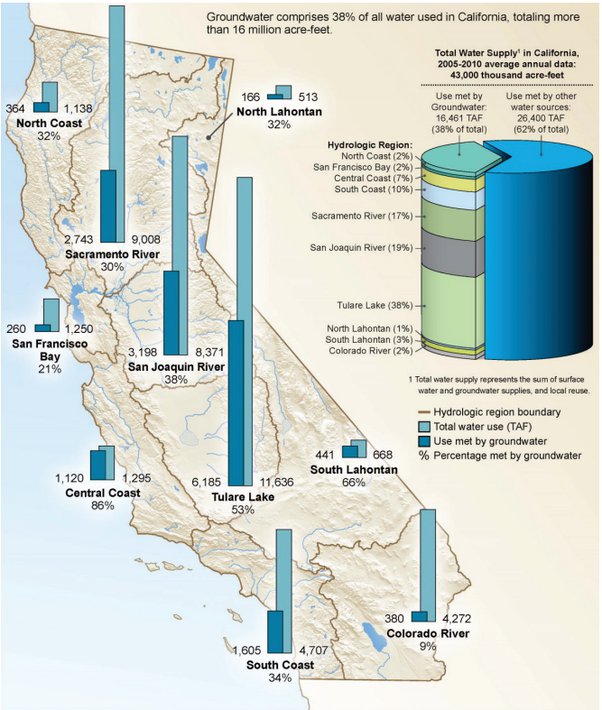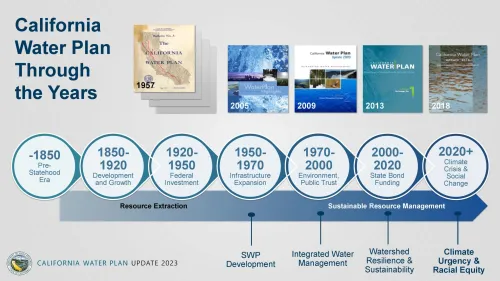Note: The content of this post is from answers to questions posed on Quora, written by Dylan Duverge. For the originally published content, Click Here.
The short answer is no.
Probably the best resource to understand California’s water issues at a statewide scale is the California Water Plan. This resource summarizes the water demand and supply situation in California under various historical and probable future climate scenarios. To put this question in context, groundwater extraction comprised between 13% and 38% of California’s total yearly water supplies between 2011 and 2015[1]with the low end occurring in wet years (e.g., 2011) and the high end occurring after multiple critically dry years (e.g., 2014 and 2015). There are also marked differences among various regions with regard to how much they rely on groundwater. The image below[2] , while a bit outdated, shows the percentage of water demands met by groundwater for each region in California.

Certain communities in California, particularly those in arid locales (like the southern San Joaquin Valley and the Colorado/Mojave/Sonoran Deserts) do not have access to surface water (either local or via imported via pipeline), and will likely continue to be 100% dependent on groundwater for the foreseeable future. Furthermore, under extreme drought situations, some larger communities that normally have access to surface water may lose that access, and need to rely almost exclusively on groundwater for as long as a severe drought persists. Some of the larger, well funded and forward thinking municipalities have started to invest in local, drought proof supplies like recycled water, desalination, and managed groundwater recharge (or “groundwater banking”) that would lessen the severity of drought impacts.
That said, the State as a whole could not continue to exist in its current state if it had to rely 100% on groundwater all of the time. Precipitation, specifically snowpack and snowmelt from the Sierra Nevada, is the primary source of water supply and natural groundwater recharge in California — though it varies from place to place, season to season, year to year. Sierra snowpack and major rivers and streams are too important a source of water for irrigation, municipal supplies, rural supplies, and industrial uses, and could not be totally replaced by groundwater extraction.

